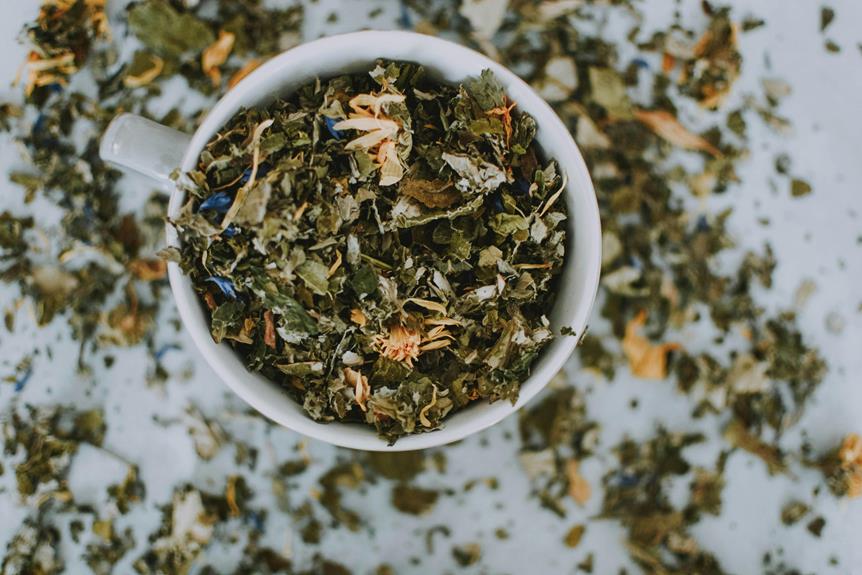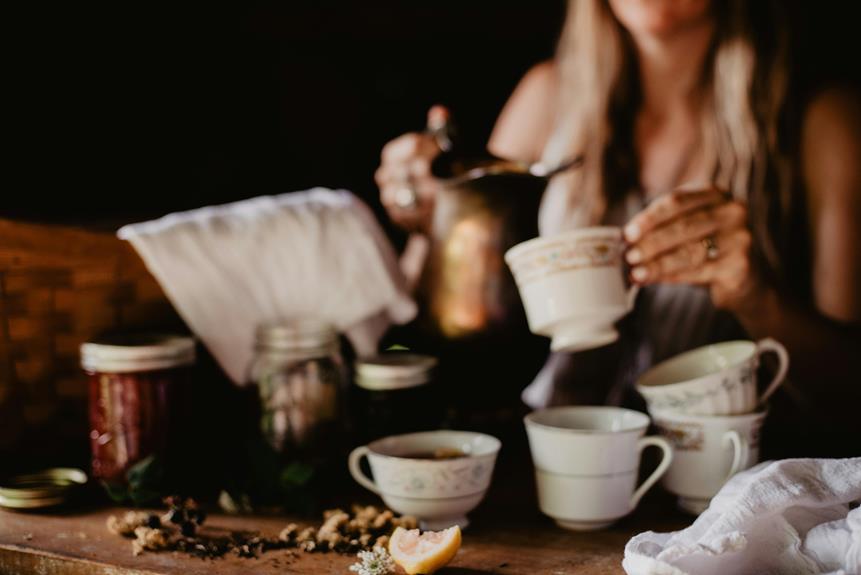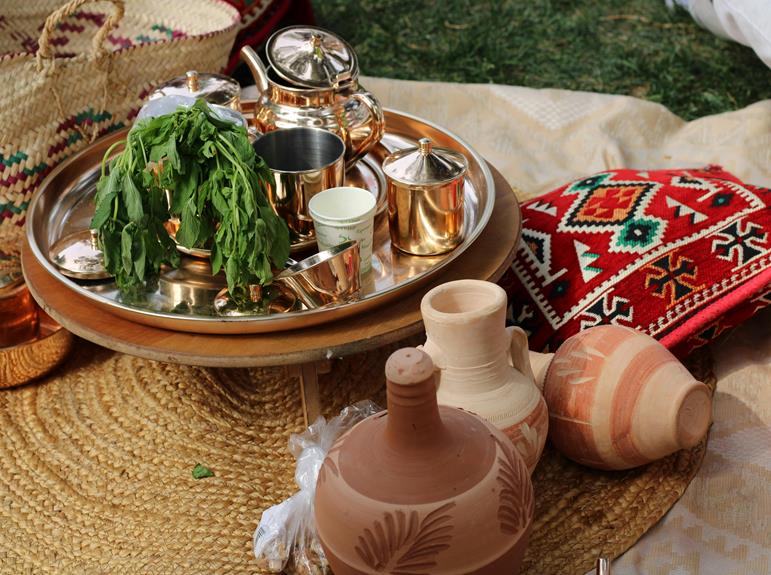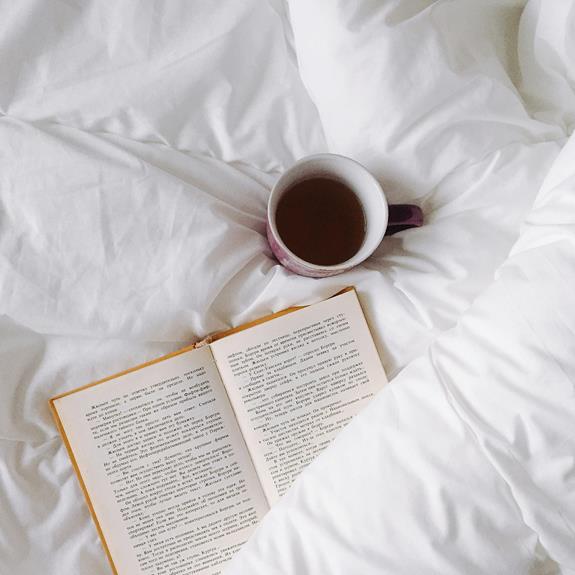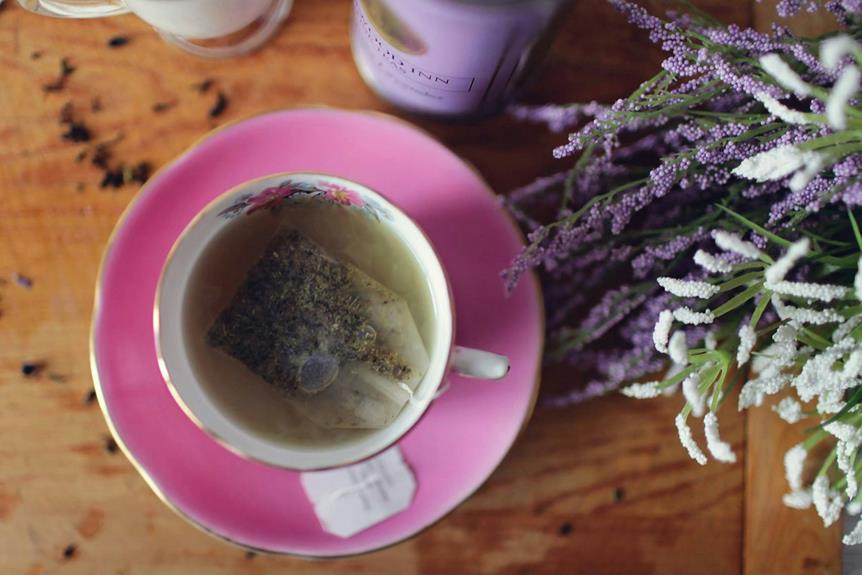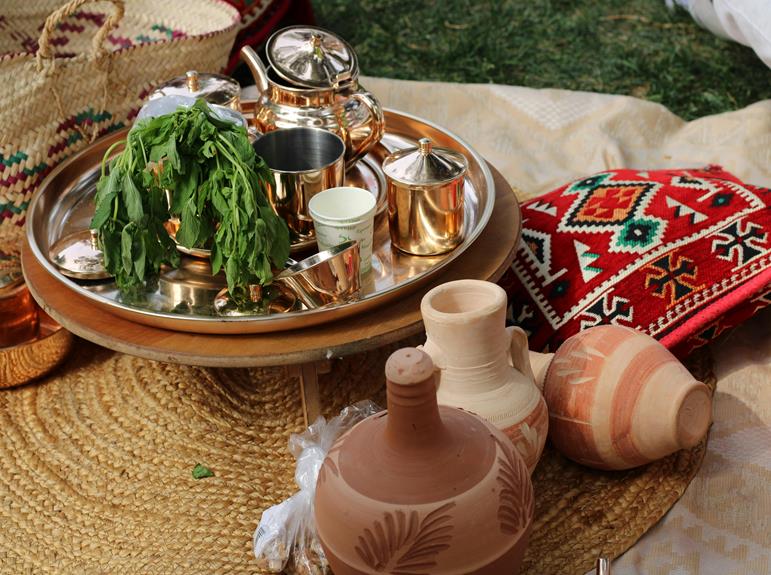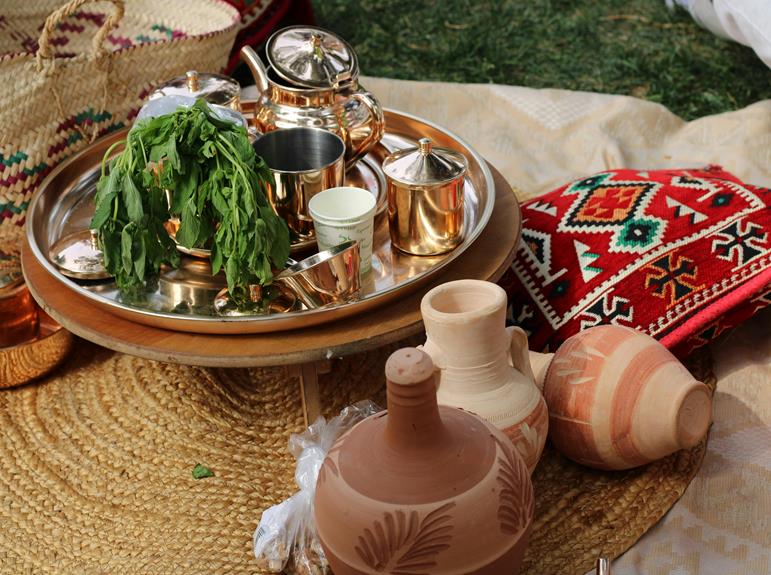When you're feeling stressed and anxious, you're not alone. Fortunately, there's a natural remedy that's been calming minds and bodies for centuries: lemon balm tea. This gentle brew works by regulating neurotransmitters like GABA and serotonin, promoting relaxation and reducing anxiety. With a rich history dating back to ancient Greece and Rome, lemon balm has been used to soothe the nervous system, promote mindfulness, and even improve sleep quality. By enjoying a cup of lemon balm tea, you're taking the first step towards a calmer, more balanced you – and there's more to discover about how this ancient herb can benefit your well-being.
Key Takeaways
- Lemon balm tea regulates neurotransmitters like GABA and serotonin to promote relaxation, reducing stress and anxiety.
- The herbal synergy of lemon balm's compounds enhances its calming effects, making it a gentle remedy for anxiety.
- Drinking lemon balm tea can calm the mind, reduce stress levels, and promote better emotional regulation.
- Lemon balm tea has been used for centuries in traditional European folk medicine to treat anxiety, insomnia, and digestive issues.
- Regular consumption of lemon balm tea can lead to improved sleep quality, reduced anxiety, and a more capable approach to daily challenges.
The Science Behind Lemon Balm
As you explore the benefits of lemon balm tea, understanding the science behind this calming herb is vital.
Lemon balm, a member of the mint family, has been extensively studied for its calming effects on the nervous system, and researchers have identified the specific compounds responsible for its therapeutic properties.
You'll find that the key to lemon balm's calming effects lies in its ability to regulate neurotransmitters, such as GABA and serotonin, which play a vital role in mood regulation.
This herbal remedy works by increasing the production of these neurotransmitters, promoting relaxation and reducing anxiety.
In addition, lemon balm exhibits herbal synergy, meaning its individual compounds work together to enhance its therapeutic effects.
This synergy allows lemon balm to provide a more all-encompassing approach to stress relief, addressing the root causes of anxiety rather than just masking its symptoms.
History of Lemon Balm Use
As you explore the calming world of lemon balm tea, you'll discover that its therapeutic properties have been harnessed for centuries, with a rich history of use dating back to ancient Greece and Rome.
The ancients revered lemon balm for its calming effects and used it in various remedies to soothe the mind and body. In fact, the Greek physician Dioscorides wrote about the herb's medicinal properties in his book 'De Materia Medica' around 60 AD.
As you examine further into the history of lemon balm use, you'll find that ancient cultures, such as the Greeks and Romans, used lemon balm in herbal traditions to promote relaxation and reduce anxiety.
In the Middle Ages, lemon balm was used in monastery gardens to create teas and infusions for medicinal purposes.
The herb was also used in traditional European folk medicine to treat digestive issues and insomnia.
In the 17th century, John Evelyn, an English herbalist, wrote about the benefits of lemon balm in his book 'Acetaria: A Discourse of Sallets'.
Lemon balm's long history of use is a demonstration of its enduring popularity as a natural remedy for stress and anxiety.
Calming Effects on the Mind
Drinking lemon balm tea can calm your mind and reduce stress levels by promoting relaxation and soothing your nervous system.
As you sip on this herbal brew, you'll start to feel a sense of tranquility wash over you, quieting your racing thoughts and worries.
This is because lemon balm contains compounds that interact with your brain's neurotransmitters, reducing anxiety and promoting a sense of calm.
When you're feeling overwhelmed, lemon balm tea can help you cultivate mindfulness practices, encouraging you to focus on the present moment and let go of stressors.
By regular consumption, you'll develop better emotional regulation, responding to challenging situations with more clarity and composure.
The calming effects of lemon balm tea can also improve your sleep quality, allowing you to wake up feeling refreshed and more capable of tackling the day's challenges.
As you make lemon balm tea a part of your daily routine, you'll experience a profound sense of calm, better equipped to navigate life's ups and downs with grace and poise.
Physical Health Benefits Abound
You can reap a multitude of physical health benefits from incorporating lemon balm tea into your daily routine.
From soothing digestive issues to boosting your immune system, the advantages of lemon balm tea are vast.
One of the most significant benefits is its ability to calm skin issues such as acne, eczema, and rosacea.
The antioxidants present in lemon balm tea help reduce inflammation, promoting healthy and glowing skin.
Some other physical health benefits of lemon balm tea include:
- Reducing menstrual cramps and PMS symptoms
- Easing symptoms of IBS and other digestive disorders
- Lowering blood pressure and cholesterol levels
- Soothing headaches and migraines
Brewing and Enjoying Lemon Balm
Steep a teaspoon of dried lemon balm leaves or a few fresh leaves in a cup of boiling water for 5-7 minutes to release the calming and invigorating qualities of this herbal tea.
As you wait for the tea to steep, take a moment to appreciate the soothing aroma that fills the air.
Once the tea has reached your desired strength, strain the leaves and add honey or lemon to taste.
You'll notice that lemon balm tea has a light, citrusy flavor profile that's both revitalizing and calming.
To enhance your tea-drinking experience, consider investing in some tea accessories, such as a tea infuser or a beautifully crafted tea cup.
These small touches can make a big difference in your overall enjoyment of the tea.
As you sit back and sip your lemon balm tea, feel your worries melting away and your mind and body relaxing.
Whether you're looking to unwind after a long day or simply need a moment of calm, lemon balm tea is the perfect choice.
Frequently Asked Questions
Can I Consume Lemon Balm Tea if I'm Pregnant or Breastfeeding?
If you're pregnant or breastfeeding, you're probably wondering if it's safe to consume lemon balm tea. Thankfully, you can enjoy prenatal relaxation with lemon balm, as it's generally considered safe for fetal development and won't harm your baby.
Does Lemon Balm Tea Interact With Any Medications or Supplements?
You should know that herbal remedies, in general, can interact with certain meds. Specifically, you'll want to exercise caution when consuming lemon balm tea with blood thinners or thyroid medications, as it may amplify their effects or reduce their efficacy.
How Much Lemon Balm Tea Should I Drink per Day for Optimal Benefits?
You'll want to find the right dosage and timing to fit into your daily routine. Start with 1-2 cups per day, spaced out to maintain a calm and focused feeling, and adjust as needed to suit your individual needs.
Can I Grow Lemon Balm in My Home Garden or Indoor Space?
Savoring serenity in your space, you can successfully cultivate lemon balm in your home garden or indoor area, provided you guarantee well-draining soil conditions and partial sunlight meeting its light requirements.
Is Lemon Balm Tea Safe for Children and Pets to Consume?
You'll be happy to know that lemon balm tea is generally safe for kids and pets, making it a great addition to kid-friendly recipes and pet calming routines, when consumed in moderation and under adult supervision.
Conclusion
As you sit back with a warm cup of lemon balm tea, let the gentle hum of the 19th-century steam engine in your mind come to a halt.
Allow the soothing aroma to quiet the chaos, and let your worries fade like the last wisps of fog on a summer morning.
You've discovered a timeless remedy that's been calming minds and bodies for centuries.
Savor the tranquility, and let lemon balm tea be your trusted companion on the journey to serenity.
